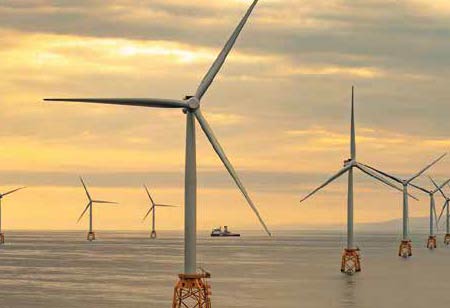

Thank you for Subscribing to Energy Business Review Weekly Brief

Christos Kolliatsas is Technical Director for Clean Energy EMEA at Wood, leading the delivery of renewable projects and innovation programs that support clients on their net-zero journey. With over 20 years of experience, he previously held senior roles leading technical due diligence on over £20 billion in transactions and served as an Owner’s Engineer across offshore wind, renewables and gas power. He brings a pragmatic, delivery-focused approach shaped by deep field experience and cross-sector insight.
Through this interview, Kolliatsas highlights how clean energy progress relies on practical leadership, local execution and the ability to align ambition with on-the-ground realities. Balancing Global Ambition with Regional Realities Global targets help set direction, but the reality of clean energy is built project by project, each in its context. From my observation, what worked well for a project in one location rarely fits elsewhere without adjustment. Every site brings physical, regulatory and logistical conditions and you must tailor your approach. We don’t talk about decarbonization as a separate goal in renewables. The projects are decarbonization. But that doesn’t mean we ignore the impact. Even in clean energy, we must stay conscious of lifecycle emissions, especially during construction and manufacturing. Minimising that footprint is part of the job. Offshore wind has taught me a lot about how different regional conditions shape what’s possible. The North Sea gave us a relatively straightforward sandbox: shallow waters, “simple” seabed and a mature supply chain. But when we moved to Taiwan, Japan and the United States, everything changed. Deeper waters, more complex ground conditions and limited local capacity for trained people, vessels and even basic infrastructure are also factors. In those markets, we couldn’t just build. We had to start by transferring knowledge; training local teams, working with new suppliers and navigating permitting frameworks that weren’t always in place. The technical design is only part of it. Timelines, procurement models and even delivery expectations need to shift. What looks like a straightforward rollout in one place often requires a complete rethink elsewhere. Energy transition comes down to setting goals and building things with what’s available in your standing conditions. Dealing with Grid Limitations Early Grid connection is one of the first things to look at. You can have the best wind or solar profile on paper, but the project will fail without a viable export point. Finding where the grid can realistically absorb new power is challenging in most places. Projects require to identify early where capacity exists, what upgrades might be needed and whether those upgrades are worth the effort and investment. Sometimes, that may mean having to walk away or relocate sites entirely. This kind of grid analysis is a part of nearly every project I’ve worked on. It’s not just about finding a good generation site. It’s about lining that up with export capability. If those two don’t connect, the project doesn’t move. Addressing this early can save projects from costly delays and redesigns. It’s one of those areas where good technical planning directly affects whether the business case holds.Finding where the grid can realistically absorb new power is challenging in most places. The project requires identifying early where capacity exists, what upgrades might be needed and whether those upgrades are worth the effort and investment
I agree We use cookies on this website to enhance your user experience. By clicking any link on this page you are giving your consent for us to set cookies. More info

However, if you would like to share the information in this article, you may use the link below:
https://www.energybusinessrevieweurope.com/cxoinsight/christos-kolliatsas-nwid-1803.html